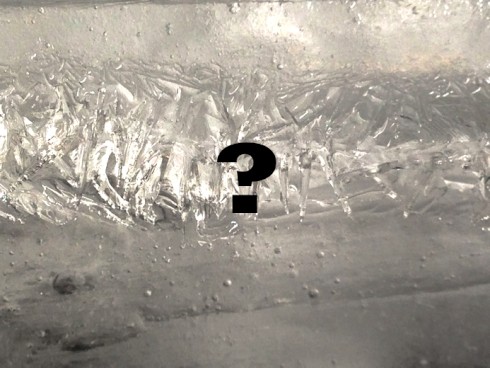Grade Level
6 - 8
minutes
15 min - 1 hr
subject
Physical Science
Activity Type:
lab simulation, informational text activity

Each of the images above shows the side view, surface view, and melting point of different types of ice. To create the ice, Science Friday approximated the freezing conditions in six different places where ice can be found: a speed skating rink, an Olympic curling rink (called a sheet), the Antarctic, a household freezer, an ice sculpting studio, and a birdbath. Use observation, along with Science Friday media resources, to match each ice image with the place where that type of ice is most likely to be found.
Ice can take many forms depending on the water used to make it and how it is frozen. For example, pure water that is left undisturbed and that freezes slowly is often very clear, while water that contains dissolved oxygen and that freezes unevenly can be cloudy and cracked. The air above the ice can impact its texture. For example, windy conditions can lead to the formation of ice spikes, while humidity can form frost on the surface of ice. Impurities in the water itself can affect ice, too, by changing the ice so that it melts at a lower temperature (the melting point). By observing the clarity, surface texture, layering, and melting points of an ice sample, a great deal can be inferred about how it was formed and where it originated.
Check out the educators’ toolbox below for instructions on how to make your own ice samples, to review the characteristics of ice, and to download an ice observation sheet.
Further explore the concepts in this activity by checking out the following Science Friday stories:
Ice Science a Slippery Quandary for Physicists – audio 10m
Crafting the Fastest Ice on Earth – audio 6m 37s
Cracking the Cool Science of Ice – audio 22m
Picture of the Week: Ice Spikes – article
Unlocking a Lake’s Bacterial Secrets Beneath 20 Meters of Ice – audio 8m
What’s So Cool About Frozen Water? – video 5m 27s
Meet the Writer
About Ariel Zych
@arieloquentAriel Zych is Science Friday’s director of audience. She is a former teacher and scientist who spends her free time making food, watching arthropods, and being outside.

